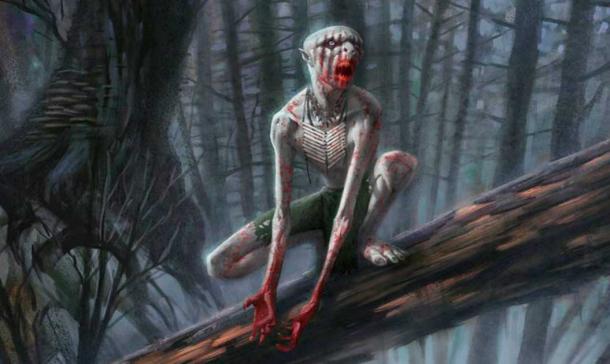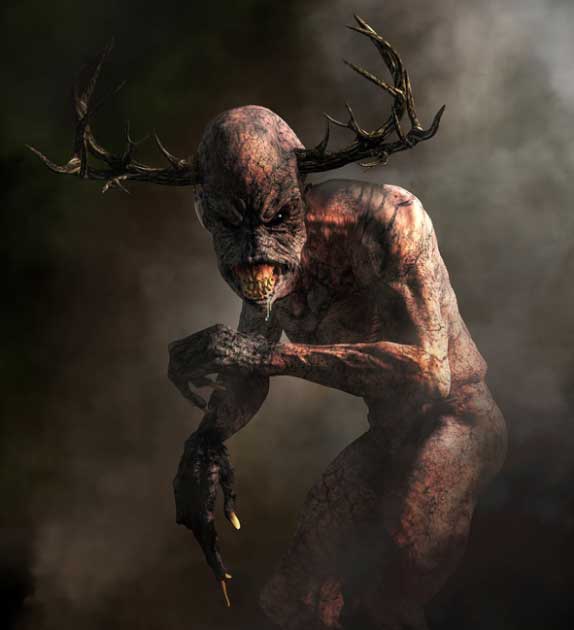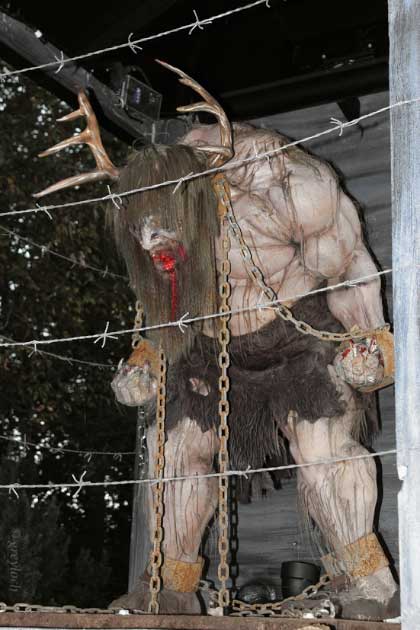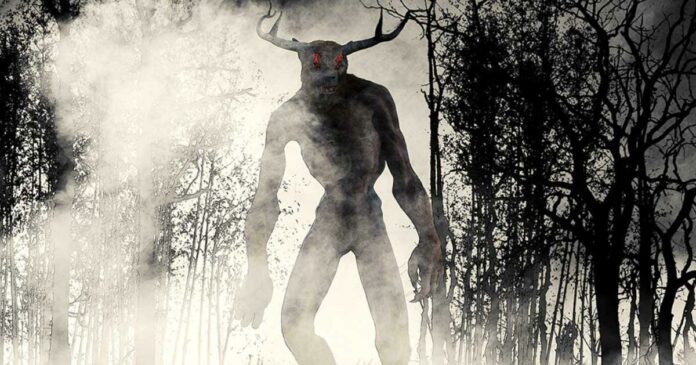The Wendigo is a terrifying creature from Algonquian Native American legends, believed to consume human flesh to endure the harsh winter. But are they merely a part of Native American mythology, or do cannibalistic humanoids truly lurk in forests, waiting for their next victim?
The Algonquians are among the largest and most widespread Native American groups in North America, historically residing along the Atlantic Coast and the Great Lakes Region. However, Wendigo-like creatures also appear in the folklore of other Native American tribes, including the Iroquois, neighbors of the Algonquians. Among these groups, a creature known as the Stonecoat shares some characteristics with the Wendigo. But what exactly is a Wendigo?

A Wendigo’s Insatiable Hunger
The word Wendigo (also spelled Windigo and Windego) roughly translates to “the evil spirit that devours mankind.” Another translation, attributed to a German explorer around 1860, equates Wendigo with “cannibal.” Wendigoag are said to have an insatiable hunger for human flesh—no matter how much they consume, they remain perpetually hungry. This insatiable hunger is mirrored in their appearance, as Wendigo are described as extremely thin. Despite their gaunt physiques, some accounts describe Wendigo as giants, standing about 4.5 meters (14.8 feet) tall.

While there are slight variations in the physical descriptions of this creature among different Algonquian peoples, it is generally agreed that Wendigo have glowing eyes, long yellowed fangs, and long tongues. Most accounts also describe Wendigo as having sallow, yellowish skin, though some say they are matted with hair or have decaying skin.
Origin of the Wendigo
Legends suggest that Wendigo were once human beings. According to the most popular version of the story, a Wendigo is created whenever a human resorts to cannibalism, even if it is for survival. Consuming human flesh is believed to cause a person to be overtaken by evil spirits, transforming them into a Wendigo.
Deals with the Devil and Wendigo Sightings
In another version of the tale, the first Wendigo was a warrior who made a pact with the Devil. To save his tribe, he gave up his soul and was transformed into a Wendigo. When peace was restored, the warrior was banished from his tribe and forced to live as an outcast. Some believe that the human soul continues to reside within the Wendigo, specifically in its heart. The only way to kill a Wendigo is to kill the human within it. A few legends suggest that the human can be rescued from inside the creature, but most say that death is the only way to free a person from the Wendigo.

Wendigo are believed to roam the forests where the Algonquians lived. Forest dwellers who disappeared over the years were rumored to have been devoured by these monsters. Numerous Wendigo sightings have been reported over time, not only by Native Americans but also by white settlers.
For example, between the late 1800s and the 1920s, a Wendigo was reportedly seen near Roseau, a town in northern Minnesota. It is claimed that every sighting of this creature was followed by an unexpected death. Eventually, the sightings ceased, and things returned to normal.
Cultural Impact and Modern Encounters
Among the Cree, there is a traditional dance called the Wihtikokansimoowin, or “Wendigo-like dance,” where dancers satirically portray the fearsome Wendigo. In addition to mocking the Wendigo, some Native Americans became known as Wendigo hunters. Belief in the Wendigo is just one aspect of American supernatural beliefs, with 1 in 8 Americans having admitted to a psychic reading, according to the Psychic Guild.

At the start of the 20th century, an 87-year-old Cree man named Jack Fiddler was tried for the murder of a Cree woman. Although he pleaded guilty, he defended himself by claiming that the woman was on the verge of transforming into a Wendigo, as she was possessed by an evil spirit. Therefore, she had to be killed to prevent her from murdering other tribe members. Fiddler claimed to have killed at least 13 other Wendigoag during his lifetime.




